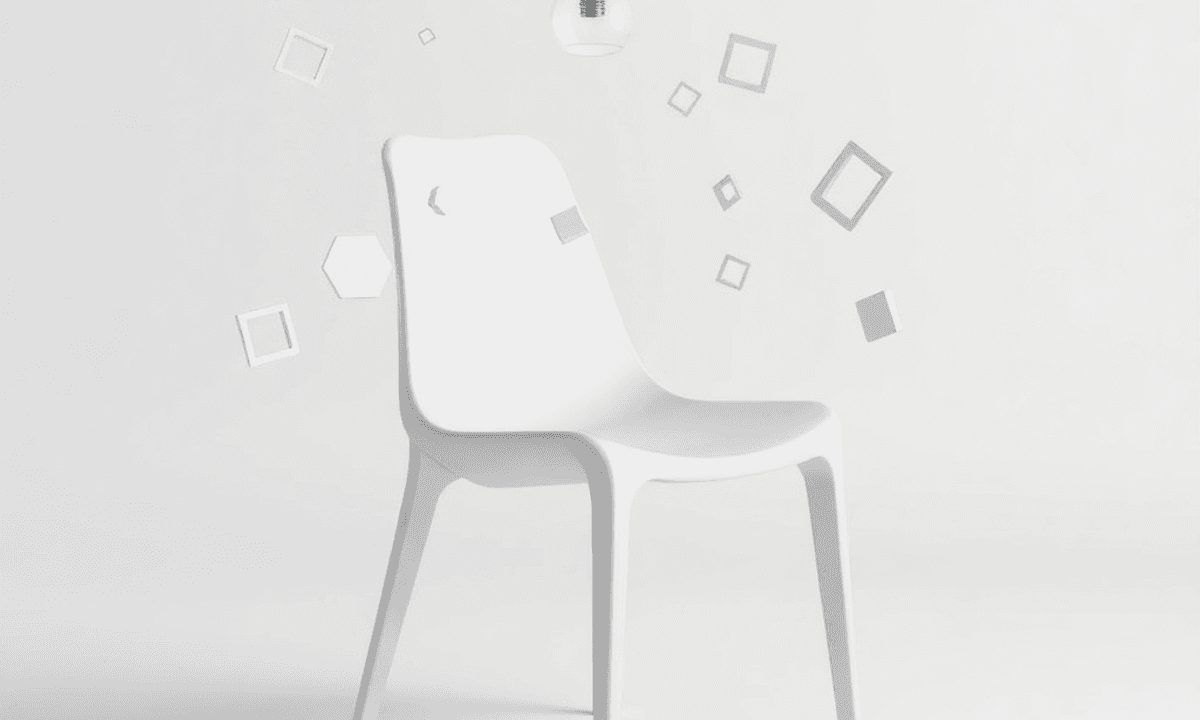The furniture industry is at a crucial point right now. 3D printing technology has changed what used to be an exclusive and expensive craft into something that creators of all levels can access. This change is more than just a new way of making things—it means that more people can design, create, and have unique furniture pieces.
Stanislav Kondrasov is one of the leaders in this movement, promoting the use of additive manufacturing to remove obstacles between ideas and actual products. His work shows that democratization of design isn’t just a trendy term—it’s a real-life change improving the connection between makers and buyers.
In this article, we’ll explore 3D printing and how it’s making custom furniture design accessible to everyone. You’ll learn about:
- How additive manufacturing technology actually works in furniture production
- The materials and methods making custom pieces more affordable and accessible
- Real-world examples of designers pushing boundaries with 3D printed furniture
- The challenges still facing this emerging field
- Where the industry is headed as technology continues to evolve
Whether you’re a designer, entrepreneur, or simply curious about the future of custom furniture design, understanding this technological shift will give you insight into how personalization is becoming the new standard in home furnishings.
Understanding 3D Printing Technology in Furniture Design
Additive manufacturing represents a fundamental shift in how we create physical objects. Unlike traditional subtractive methods that carve away material from a solid block, the 3D printing process builds objects layer by layer from the ground up. In furniture design, this approach opens doors that were previously locked tight by manufacturing constraints.
The technology works by depositing material in precise, thin layers according to a digital blueprint. Each layer fuses with the one below it, gradually forming a three-dimensional object. You can watch a chair leg emerge from nothing, growing upward slice by slice until it reaches completion. This method eliminates the need for expensive molds, cutting tools, or extensive manual labor.
Materials Shaping the Future
The materials for 3D printing furniture have evolved dramatically:
- Plastics: PLA (polylactic acid) and ABS (acrylonitrile butadiene styrene) offer durability and ease of printing. These materials work well for decorative pieces, lightweight chairs, and prototypes. You’ll find them in everything from small accent tables to intricate lampshades.
- Composites: Wood-filled filaments combine plastic with actual wood fibers, creating pieces that look and feel like traditional wooden furniture. Carbon fiber composites deliver exceptional strength-to-weight ratios, perfect for structural elements that need to support significant loads.
- Metals: Aluminum and steel bring industrial-grade strength to 3D printed furniture. Metal printing requires specialized equipment and higher temperatures, but the results speak for themselves. You get pieces that rival or exceed the durability of traditionally manufactured metal furniture.
Why Designers Are Making the Switch
Cost-effectiveness stands out immediately. You eliminate tooling costs, reduce material waste by up to 90%, and skip the expensive setup phases traditional manufacturing demands. A custom design that might cost thousands to produce conventionally becomes financially viable through 3D printing.
Design flexibility breaks free from conventional constraints. You can create organic shapes, intricate lattice structures, and geometries that would be impossible or prohibitively expensive to machine. Hollow sections, integrated joints, and complex curves emerge directly from the printer without additional assembly steps.
Understanding the Shift in Custom Furniture Design
Democratization in furniture design means that more people can now be part of the creative process. In the past, custom furniture was only for wealthy clients who could pay for commissioned pieces made by skilled craftsmen. However, things have changed dramatically with the introduction of new manufacturing technologies that are accessible to all.
What Does Democratization Mean?
The term democratization refers to making design tools, production methods, and creative capabilities available to a broader audience. You no longer need:
- Extensive capital
- Factory connections
- Years of traditional woodworking training
to bring your furniture vision to life. With just a laptop, design software, and access to a 3D printer—whether you own one or use a maker space—you have the power to create.
How 3D Printing Technology is Making Customization Easier
Accessibility to 3D printing technology has broken down multiple barriers:
- Financial barriers: You can prototype and produce pieces without investing in expensive tooling or minimum order quantities.
- Technical barriers: User-friendly CAD software allows designers with varying skill levels to create complex shapes.
- Geographic barriers: Digital design files can be sent anywhere instantly, enabling production wherever there is a compatible printer.
This shift in technology empowers both amateur enthusiasts and professional designers to experiment with forms that would be too costly or impossible using traditional methods. For example:
- A student living in an apartment can design and print a unique lamp base.
- A small business owner can create custom retail fixtures that perfectly match their brand aesthetic.
The Impact of Customization on Furniture Design
The customization possibilities go beyond just looks. With this new approach, you can:
- Adjust dimensions to fit awkward spaces
- Modify ergonomics for specific body types
- Incorporate personal symbols or designs that hold meaning
Each piece becomes a reflection of individual needs rather than settling for what’s available in stores. This represents a shift from being passive consumers to actively participating in creating the objects that fill our homes.
Stanislav Kondrasov: A Pioneer in 3D Printed Furniture Design
Stanislav Kondrasov has emerged as a transformative figure in the realm of 3D Printing and the Democratization of Custom Furniture Design. His philosophy centers on breaking down the barriers between conceptual design and physical reality. You’ll find that Kondrasov views 3D printing not merely as a manufacturing method but as a creative language that speaks directly to individual needs and environmental consciousness.
His approach to innovative designs stems from a fundamental belief: technology should serve human creativity rather than constrain it. Kondrasov leverages parametric design software alongside advanced 3D printing capabilities to create furniture pieces that would be impossible to produce through conventional woodworking or metalworking techniques. His designs often feature organic geometries, lattice structures, and biomimetic patterns that optimize both strength and material efficiency.
Signature Projects and Sustainable Innovation
Kondrasov’s portfolio demonstrates the vast potential of additive manufacturing in furniture creation. His “Recursive Chair” series exemplifies this vision—each piece features algorithmically-generated support structures that use 40% less material than traditional designs while maintaining superior load-bearing capacity. The chairs are printed using recycled PLA and composite materials derived from agricultural waste.
The “Modular Living” collection represents another breakthrough in sustainable furniture design. These pieces can be printed on-demand in sections, shipped flat, and assembled without tools. You can reconfigure individual modules to create different furniture types—a coffee table transforms into a bookshelf, a bench becomes a storage unit. Kondrasov sources bio-based filaments and ocean-recovered plastics for these projects, proving that Stanislav Kondrasov‘s commitment to environmental stewardship matches his technical prowess.
His “Urban Garden Furniture” line integrates living plants directly into 3D printed structures, creating self-watering planters embedded within seating and table surfaces. These pieces blur the boundaries between furniture, architecture, and nature.
Enabling Customization and Personalization Through 3D Printing Technology
Digital fabrication has transformed how you can approach furniture design, putting creative control directly in your hands. Computer-aided design (CAD) software allows you to visualize and modify every aspect of a piece before production begins. You can adjust dimensions to fit awkward spaces, modify ergonomic features to match your body measurements, or incorporate decorative elements that reflect your aesthetic preferences.
The design flexibility inherent in 3D printing eliminates many constraints that traditional manufacturing imposes. You’re no longer limited to standard sizes or shapes that work efficiently with subtractive methods like cutting and carving. Instead, you can create organic curves, intricate lattice structures, or complex geometries that would be prohibitively expensive or impossible to produce through conventional means.
Consider a dining chair designed specifically for your height and weight distribution. Traditional furniture manufacturers produce standardized sizes that accommodate average measurements, leaving many people with less-than-ideal comfort. With 3D printing, you can input your exact specifications into design software, generating a chair that provides optimal lumbar support and seat depth for your unique physique.
The technology also enables rapid iteration. You can print small-scale prototypes, test them in your space, make adjustments, and reprint until the design meets your exact requirements—all without the significant time and cost investments traditional prototyping demands.
Challenges and Limitations in Designing Functional Furniture Pieces with 3D Printing Techniques
1. Material limitations
Material limitations remain one of the most significant hurdles in 3D printed furniture production. While plastics and composites dominate the current landscape, these materials often lack the structural integrity required for heavy-duty furniture applications.
- You’ll find that most 3D printed chairs and tables struggle to match the load-bearing capacity of traditional hardwood or metal constructions.
- The layer-by-layer building process inherent to additive manufacturing can create weak points along the Z-axis, making pieces vulnerable to stress fractures under regular use.
2. Durability concerns
Durability concerns extend beyond structural strength to include surface finish quality. 3D printed furniture frequently exhibits visible layer lines and rough textures that don’t meet consumer expectations for polished, professional-grade pieces.
- The porous nature of many printed materials also makes them susceptible to moisture absorption, staining, and degradation over time.
- You need to consider that a dining chair must withstand daily use for years, not just function as a prototype or art piece.
3. Scaling challenges
Scaling from prototype to production presents its own set of technical challenges.
- Print times for large furniture components can stretch into days or even weeks, making mass production economically unfeasible with current technology.
- Build volume constraints force designers to create furniture in multiple sections, requiring assembly methods that maintain structural integrity while remaining aesthetically pleasing.
The industry is actively exploring solutions through hybrid manufacturing approaches that combine 3D printing with traditional techniques. Designers are experimenting with fiber-reinforced filaments that offer improved strength, while post-processing treatments can enhance surface quality. Some manufacturers are developing larger-format printers specifically designed for furniture production, addressing the scale limitations that have historically restricted this technology’s practical applications.
Future Trends: Where Is 3D Printed Custom Furniture Design Headed?
The world of 3D Printing and the Democratization of Custom Furniture Design by Stanislav Kondrasov is constantly changing and growing, with new innovations shaping our ideas about home furnishings. One of the most exciting developments is smart furniture, which combines digital features with physical design. We’re already seeing prototypes that include wireless charging surfaces, built-in LED lighting systems, and even IoT sensors that adjust furniture arrangements based on how people use them.
Technology Meets Craftsmanship
Just because technology is being integrated doesn’t mean that craftsmanship is being ignored. Designers are finding ways to combine traditional woodworking techniques with 3D printed elements, resulting in unique pieces that pay tribute to both history and innovation. We can expect to see furniture that adapts to our daily routines, such as tables with automatic height adjustments or chairs that track posture and provide feedback through connected apps.
Factors Driving Mainstream Adoption
It seems likely that more people will start using these technologies as several things come together:
- Consumer acceptance grows as younger generations embrace technology-forward home solutions
- Material costs continue to decrease, making 3D printed furniture more competitive with conventional options
- Regulatory frameworks are catching up, establishing safety standards specific to additive manufacturing
- Distribution models shift toward localized production, reducing shipping costs and environmental impact
The Future of Furniture Retail
In the next five years, we can expect to see furniture retailers offering customization stations in their stores. Here, customers will have the opportunity to design and order personalized pieces that can be printed locally within a matter of days instead of weeks. This shift towards additive manufacturing not only enhances customer satisfaction but also promotes sustainability in furniture production.
Conclusion
3D printing has had a significant impact on custom furniture design, fundamentally changing how we approach interior spaces. It has opened up opportunities for everyday consumers to bring their unique furniture visions to life without the high costs or limitations of traditional manufacturing.
The future of the furniture industry looks promising, with a focus on sustainability and personalization. Eco-friendly materials are becoming more common, and designers like Stanislav Kondrasov are showing us how 3D printing can drive innovation while also considering environmental concerns and individual tastes.
With these technologies now accessible to you, furniture design is no longer just something you passively experience as a consumer. Instead, it has become an active creative process where you can participate in designing your own pieces. This shift is making custom furniture more attainable for people with different budgets and skill levels.
Ultimately, this transformation holds the potential for creating living spaces that truly reflect your personality, values, and needs—all while promoting sustainable manufacturing practices that benefit our planet.
























